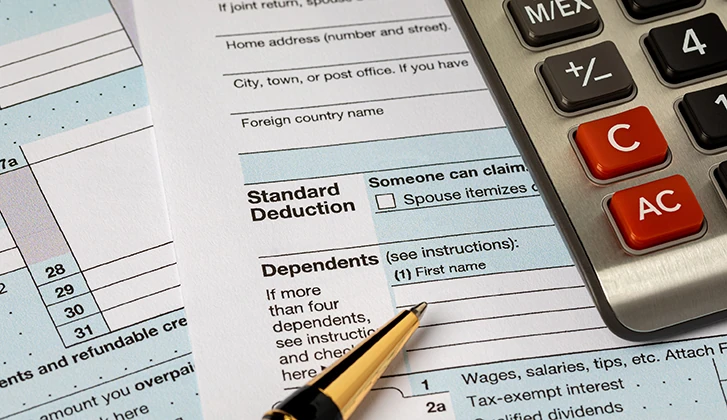NOTICE: Internet Explorer was retired by Microsoft on June 15th, 2022 and is no longer supported. This could change how you access Online Banking.
Liquidity Ratios: Definitions, Formulas and Tips

Liquid assets are your business’s lifeblood.
Maintaining a strong liquidity position enables your company to weather temporary disruptions, secure affordable financing, and pursue sustainable growth. To gain a full perspective on this element of your finances, you’ll need to understand liquidity ratios. In this article, you’ll learn what liquidity ratios are, how to calculate and interpret them, and how to optimize your numbers for future success.
Liquidity Ratios Defined
In essence, a liquidity ratio is a snapshot of your firm’s ability to pay its short-term debt obligations. Specifically, this type of metric indicates whether your firm can cover existing debts with existing assets without raising external capital or leveraging fixed assets like real estate. Many businesses treat liquidity ratios as key performance indicators, and lenders and investors frequently consider them (along with business credit scores and other factors) in making funding decisions.
3 Liquidity Ratio Formulas
There are several different methods for calculating your business’s liquidity ratio. Here, we’ll cover the three most commonly used formulas and their key features.
- Current Ratio
= current assets / current liabilities
Also known as the working capital ratio, this metric is the easiest to calculate and interpret. Just locate the current assets and current liabilities line items on your company’s balance sheet and divide the former by the latter.
- Quick Ratio
= (cash + marketable securities + accounts receivables) / current liabilities
Sometimes referred to as the acid test ratio, this metric is a more stringent test of your business’s liquidity. In the first formula, the numerator is current assets, which includes all resources that could be converted to cash within one year. Here, though, the numerator includes only resources that could be converted to cash within 90 days (and that excludes inventory and prepaid expenses). Thus, the quick ratio may be regarded as a truer test of your readiness to cover immediate expenses.
- Cash Ratio
= (cash + marketable securities) / current liabilities
This metric narrows the definition of liquidity even further by zeroing in your company’s most easily convertible assets: cash and cash equivalents (like certificates of deposit) and marketable securities (like Treasury bills). Like the quick ratio, the cash ratio excludes inventory and prepaid expenses but also excludes accounts receivable. Cash ratio can be useful for some methods of cash flow analysis, but it’s often viewed as a worst-case scenario test and is used less often than the other two formulas.
What the Numbers Mean
Because these formulas take different asset categories into account, the resulting ratios can vary significantly. Consider the following simplified example:
| XYZ Inc. Balance Sheet | |||
| Cash and Equivalents | 10,000 | Accounts Payable | 5,000 |
| Marketable Securities | 2,000 | Short-Term Notes Payable | 4,000 |
| Accounts Receivable | 4,000 | Wages Payable | 4,000 |
| Inventory | 3,000 | Taxes Payable | 1,000 |
| Prepaid Expenses | 1,000 | Interest Payable | 1,000 |
| Total Current Assets | 20,000 | Total Current Liabilities | 16,000 |
In this case, XYZ Inc. would have the following liquidity ratios:
- Current Ratio: 1.25
- Quick Ratio: 1.00
- Cash Ratio: 0.75
Because it’s the simplest and most commonly used, let’s focus on the current ratio. Generally speaking, you want to aim for a number a bit above 1.0. Anything below 1.0 indicates that your business might have trouble meeting its obligations. That could be a red flag for potential lenders and investors, who’ll want assurance that you can pay off loans on time and continue to build value in your enterprise.
But it’s also possible to have a current ratio that’s too high. A number that’s way above 1.0 – say, 3.0 – suggests that you’re sitting on excess cash that could be reinvested into your business. Though creditors and investors may like it, many experts recommend that businesses keep enough cash on hand to cover three to six months of essential operating expenses, but anything over that represents missed opportunities for growth.
In the example above, XYZ Inc.’s current ratio of 1.25 appears healthy. The owner shouldn’t have to worry about being able to pay the bills, and financial institutions are likely to view it as a sign of creditworthiness.
Of course, as with all things in business, rules are never one-size-fits all. If possible, it’s smart to compare your liquidity ratios against industry averages.
Improving Your Liquidity
If you’ve crunched the numbers and want to increase your liquidity ratio, consider these tips:
- Control overhead expenses. Negotiate or shop around for rent, utilities, insurance, marketing, and other major operating expenses. Also, be sure to scrutinize your monthly statements for recurring charges like software subscriptions and professional memberships – if they’re not actively adding value, cancel them. By reducing overhead, you can enhance your profitability as well as your liquidity.
- Sell off unproductive assets: Convert idle fixed assets for an immediate boost to your liquidity ratios. You’ll enhance both sides of the equation if those assets are not just stored and have maintenance costs.
- Streamline your payment cycle: Invoice quickly, incentivize your customers to pay early, and try to negotiate discounts (or longer payment cycles) with your own vendors. Look into digital tools that can help you process and time payments while saving you the time and cost of manual bookkeeping.
- Revisit your debt: Turn short-term debt into longer-term debt to lower your monthly payments and increase your liquidity ratio. Some lending tools like consolidation, refinancing, and recasting could also save you money in the long run. Consult your financial institution to explore your options.
- Open a line of credit: Look into a business line of credit that can enable you to cover unexpected cashflow gaps. There’s no substitute for careful revenue forecasting and budgeting, but when minor hiccups inevitably arise, access to an affordable and flexible line of credit can help you stay on top of your bills and maintain a strong liquidity ratio.
More Options. More Opportunities.
For more tips on making the most of your finances, consult your financial institution.
Content is for informational purposes only and is not intended to provide legal or financial advice. The views and opinions expressed do not necessarily represent the views and opinions of WesBanco.
While we hope you find this content useful, it is only intended to serve as a starting point. Your next step is to speak with a qualified, licensed professional who can provide advice tailored to your individual circumstances. Nothing in this article, nor in any associated resources, should be construed as financial or legal advice. Furthermore, while we have made good faith efforts to ensure that the information presented was correct as of the date the content was prepared, we are unable to guarantee that it remains accurate today.
Neither Strategy Academy nor its sponsoring partners make any warranties or representations as to the accuracy, applicability, completeness, or suitability for any particular purpose of the information contained herein. Strategy Academy and its sponsoring partners expressly disclaim any liability arising from the use or misuse of these materials and, by visiting this site, you agree to release Strategy Academy and its sponsoring partners from any such liability. Do not rely upon the information provided in this content when making decisions regarding financial or legal matters without first consulting with a qualified, licensed professional.
Explore WesBanco Insights
Discover how WesBanco can help you prepare for the road ahead. Gain exclusive insights and learn how to achieve your financial goals.
Education & Insights



